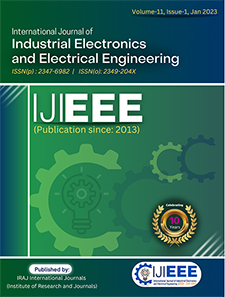Publish In |
International Journal of Industrial Electronics and Electrical Engineering (IJIEEE)-IJIEEE |
 Journal Home Volume Issue |
||||||||
Issue |
Volume-2,Issue-10 ( Oct, 2014 ) | |||||||||
Paper Title |
Design And Implementation Of 128-Bit Quantum-Dot Cellular Automata Adder | |||||||||
Author Name |
K.Ravitheja, G.Vasantha, I.Suneetha | |||||||||
Affilition |
1 student, Dept of Electronics & Communication Engineering, Annamacharya Institute of Technology And Sciences, Tirupati, India 2 assistant Professor, Dept of Electronics & Communication Engineering, Annamacharya Institute of Technology and Sciences, Tirupati, India 3 HOD, Associate Professor, Dept of Electronics & Communication Engineering, Annamacharya Institute of Technology and Sciences ,Tirupati, India | |||||||||
Pages |
6-11 | |||||||||
Abstract |
In this paper, a novel quantum-dot cellular automata (QCA) adder design is presented that decrease the number of QCA cells compared to previously report designs. The proposed one-bit QCA adder design is based on a new algorithm that requires only three majority gates and two inverters for the QCA addition. A novel 128-bit adder designed in QCA was implemented. It achieved speed performances higher than all the existing. QCA adders, with an area requirement comparable with the cheap RCA and CFA established. The novel adder operates in the RCA fashion, but it could propagate a carry signal through a number of cascaded MGs significantly lower than conventional RCA adders. In adding together, because of the adopted basic logic and layout strategy, the number of clock cycles required for completing the explanation was limited. As transistors reduce in size more and more of them can be accommodated in a single die, thus increasing chip computational capabilities. However, transistors cannot find much smaller than their current size. The quantum-dot cellular automata approach represents one of the possible solutions in overcome this physical limit, even though the design of logic modules in QCA is not forever straightforward. | |||||||||
| View Paper | ||||||||||